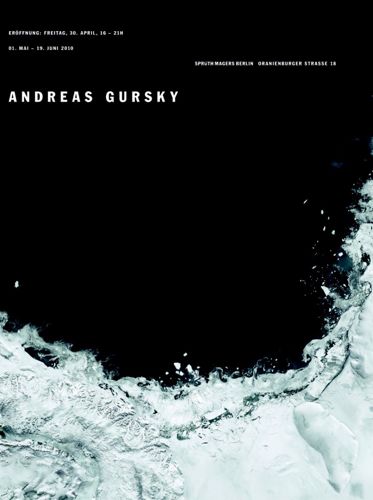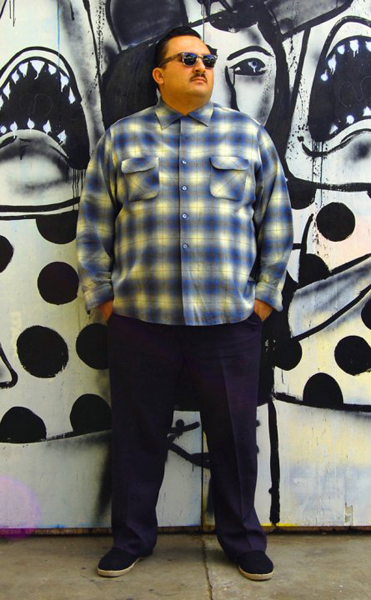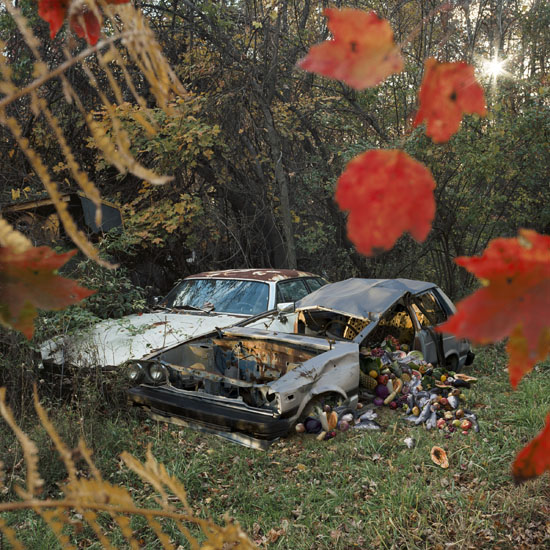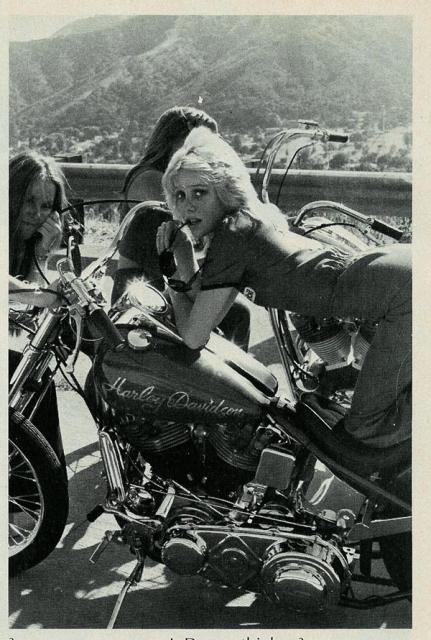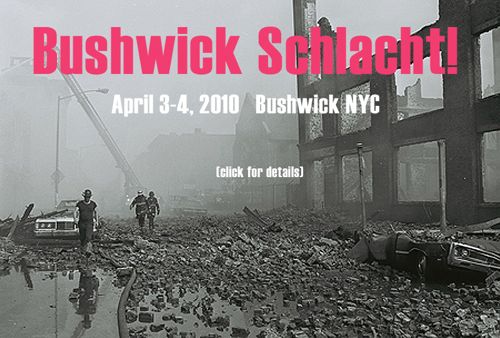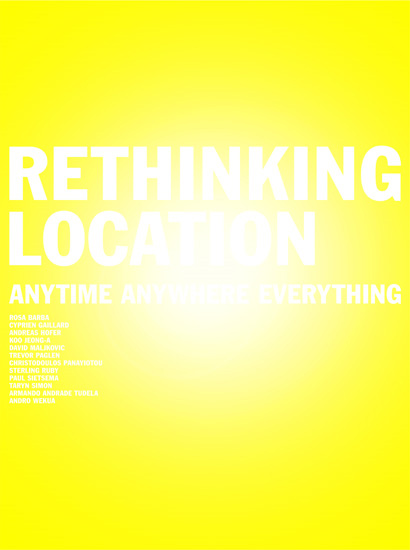
Tag: Berlin
Andreas Gursky
“illuminating Shadows” Kirstine ROEPSTORFF
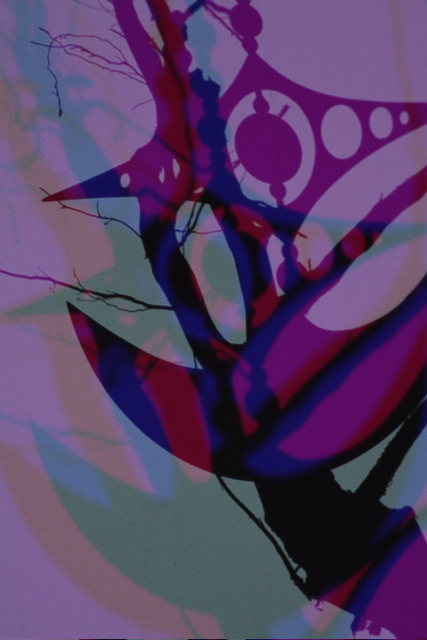
Javier Peres is pleased to announced “Illuminating Shadows,” Kirstine Roepstorff’s fourth solo exhibition with the gallery, at Peres Projects Berlin.
Kirstine Roepstorff’s works have a way of speaking in big terms, which despite their metaphysicality are vibrantly catalogued and defined in the artist’s practice. She can explore the idea of, say, a shadow, applying this – for lack of a better word – paradigm to everything from cultural, national, or personal awareness, honesty, or even the changing seasons, by employing visual metaphors of everything from rocks, forests, sumo wrestlers, storks, newspaper headlines and nude figures. Roepstorff is an appropriation artist, and she rearranges the images we see to say something about reality. But she also rearranges normal conceptual boundaries, and the complex visual collages we see are reflections of this. She talks about her work in terms of energies, honesty, personal shadows, awareness, weight, balance, gardening, or any number of people and animals who have become modern-day archetypes in her complexly coded visual world – a juggler, Balance, a wolf, the Eel of Unfortune, Moment Man, or The In-Between. Things that are normally incomparable, like advertisements for eyewear and images of lynch mobs, are oddly brought into interrelational comparisons that defy logic – akin to asking which is more, 2+2 or wilderness?
This new series of large-scale sculptures and collages represent a selection of works from the artist’s most recent museum exhibition at the Galerie im Taxispalais, Innsbruck, and Stadtgalerie Schwaz – both in Tyrol, Austria. The exhibition was accompanied by a catalogue. The special exhibition concept was prompted by the artist’s first visit to Tyrol and the Haus der Völker in Schwaz, an ethnological museum based on the private collection of Dr. Gert Chesi. By integrating numerous African artworks from the collection into her exhibition, Roepstorff brought ritual objects into dialogue with her own works, causing these objects to be viewed aesthetically, and her own works to be viewed anthropologically.
At the same time, the strong presence of light and shadow is not insignificant. The sculptural works are in large part translucent, and it is only through illumination that many of the layers of images between two translucent pieces of fabric become visible. A shadow is an interesting phenomenon – both present and absent at the same time. For her exhibition at Peres Projects, Roepstorff has not included the African sculptures, and yet their absence is present. Most importantly, with this body of work she has expanded her large range of consumer-grade materials (paper, fabric, glass, jewelry, tinsel, beads, roots, concrete, etc.) to include light and shadow. Now, for the first showing of the works in Berlin, in a gallery, where the atmosphere has been distilled and the power of the works concentrated, this is a show that synthesizes its own thesis. It is the show that lost its shadow.
SPENCER FINCH
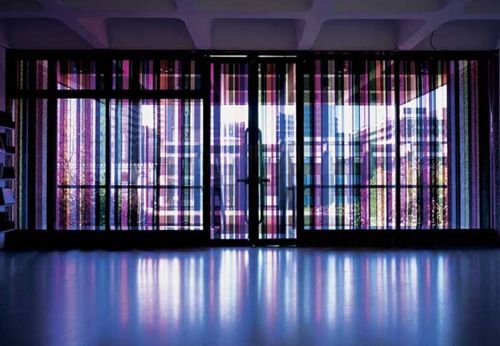
Galerie Nordenhake has the great pleasure to present an exhibition with new works by US-American artist Spencer Finch, to open during the Gallery Weekend Berlin. Themes uniting the diverse works in the show are the complexities and pleasures of apprehending sensations. Most of the works deal with misperceptions or misapprehensions. They are treated not necessarily as failure but as pleasurable moments hinting at a seeing prior to recognition and rationalisation.
The seduction of misperception is suggested in a group of photographs: in reality representations of cherry blossoms in a pond, they appear as delicate images of clouds in the sky bringing to mind Alfred Stieglitz’ series of abstract photographs “Equivalence”. In another work the white concrete sculptures sitting directly on the gallery floor recall piles of snow as they were ubiquitous in the streets during last winter.
The artist maps the limits of his own field of vision in a series of drawings that compare far peripheral and central vision, but they also contrast linguistic and visual descriptions of colour. Spencer Finch recored the colour of a car rushing by on a highway once it appeared in his field of vision and painted his colour impression with pigments on paper. Like an researcher, he adds a written account of the vehicle’s actual colour and form. The central vision differs from the perception in peripheral areas of the eye in respect to colour and form and proves it as erroneous.
The uncertainty of perception — that there is more to reality than our bodily senses could register — is implyed in the works after false-colour images. The colourful oil pastels look entirely abstract but are in fact truly representational as they render thermograms of the windows in the artist’s studio.
Spencer Finch is known for a multi-layered artistic practice in which he explores the mechanism and mysteries of perception. Many of his poetic and witty works aim at preserving the memory of a sensorial experience, be it a pile of snow or moonlight in Venice. He bases his unconventional and meticulous representations on extended research and rigorous measurement while his art acknowledges the difference and distance of all representation and reinforces the beauty of the fleeting nature of the observed world.
Nordenhake
Mario Ybarra Jr.
Anthony Goicolea ///
DECEMBERMAY, Anthony Goicolea’s third solo show with Aurel Scheibler in Berlin, will present new paintings and photographs completed during a period of retreat from his familiar urban surroundings. Subtler and more intimate in scale and subject, these photographs represent a departure from his disturbing, highly constructed and often sweeping compositions. Much of the imagery depicts the seasonal cocooning of winter, which allows reflection and offers renewal but is permeated with lonesome and at times threatening isolation. These abandoned settings seem to capture sites of sacrificial rituals that upon closer examination reveal traces of humanity. Dens of hoarded objects for the fulfillment of physical or mental needs—food, clothing, books, building materials—are piled up precariously. Cryptic script communicates with the world of the living or the dead. And, for the first time, young children make an appearance.
Any comfort is undermined by a familiar undercurrent of morbidity: fecundity is crippled by futile obsessiveness and decay, paths lead to uncertainty or death, means for passage are damaged, and the spirit world has broken through to our everyday reality. As messengers, however, the children bring with them a sense of renewal and hope for the future.
Anthony Goicolea was born in Atlanta in 1971 and lives and works in Brooklyn. He has recently participated in exhibitions at the Guggenheim Museum in New York and the Fotofestival in Knokke, Belgium. His Related series of the past two years has been shown at the Museum of Contemporary Art in Denver and at the Houston Center for Photography. His works are included in numerous public and private collections worldwide.
Moshekwa Langa // Wuthering Heights

![]() The South African artist Moshekwa Langa (born 1975) will show new works : drawings, collages and photographs as well as a video work and an installation on the floor. In his work, Langa draws on materials and ideas from his immediate vicinity. In his so called “broken landscapes” he is using wall paint, spray paint, nail polish, red wine and salt. As he layers the various materials on top of each other, he simultaneously creates layers of meaning and references that often remain ambivalent or cryptic, leaving the work of decoding entirely to the viewer.
The South African artist Moshekwa Langa (born 1975) will show new works : drawings, collages and photographs as well as a video work and an installation on the floor. In his work, Langa draws on materials and ideas from his immediate vicinity. In his so called “broken landscapes” he is using wall paint, spray paint, nail polish, red wine and salt. As he layers the various materials on top of each other, he simultaneously creates layers of meaning and references that often remain ambivalent or cryptic, leaving the work of decoding entirely to the viewer.
In his photographic work, Langa gives us insight into South African culture. He takes portraits of the inhabitants of his home city or captures them in everyday situations. If Langa’s universe seems to consist of unstable fragments, it is nonetheless concerned with the realities of daily existence. In his work, he deals predominantly with issues such as identity, social affiliation and religious rituals. Langa describes himself as a documentarian. He observes life and creates maps of its geographic and psychological history. The results of his work are not placed as much at the forefront for Langa as is the process of their creation. His exhibition at Galerie Mikael Andersen was made in the gallery-owned studio in Pfefferberg where Moshekwa Langa is currently living and working.
Moshekwa Langa lives and works in Amsterdam and Johannesburg. His work has been exhibited extensively and was included in the Venice Biennial in 2009. He will have a solo exhibition in 2011 at Kunsthalle Bern in Switzerland. He will also exhibit works at the Biennial Prospect 2 in November 2011 in New Orleans.
GET BEHIND ME SATAN AND PUSH
Bushwick Schlacht! /// POP UP PAINTING SHOW
Melanie Schiff & Sterling Ruby

Kavi Gupta Gallery Berlin is proud to present an exhibition of two video works, Melanie Schiff’s “Perfect Square” (2006) and Sterling Ruby’s “Dihedral” (2006).
Shot during a residency in Florida, Schiff’s “Perfect Square” (2006) uses marsh pools formerly explored by ecologist Jacques Cousteau as the setting for the artist’s elegant idea of swimming in a perfect square. Shot upwards from the bottom of the pool, the work is a rhythmic meditation on the relationship between nature and the basic shapes that are held ideally in the human mind.
In Sterling Ruby’s “Dihedral” (2006), plumes of liquid color slowly diffuse and absorb each other. A narrator with an ambiguous voice provides the work’s audio as he reads Roger Callois’ “Mimicry and Legendary Psychasthenia”, a text originally published in 1935 in the Surrealist publication, Minotaure. The text references mimicry, camouflage, and metamorphosis – to discuss how an organism distinguishes itself physically and psychologically from its surroundings.
Melanie Schiff (b. 1977 in Chicago) lives and works in Los Angeles. In addition to her inclusion in 2008 Whitney Biennial, Schiff’s work has also been recently exhibited at the Museum Of Contemporary Art in Chicago, P.S.1 MOMA in New York, and Aspen Art Museum in Aspen, Colorado. Other group exhibitions include Shadows Don’t Cast Shadows at Meyer Riegger in Karlsruhe, Germany, Autonomy at Foxy Production in New York City, and Too Strong To Stop, Too Sweet To Lose at Cohan & Leslie in New York City. This past fall Schiff presented her third solo exhibition with Kavi Gupta Gallery in Chicago; it was entitled The Mirror.
Sterling Ruby (b. 1972 in Bitburg, Germany) lives and works in Los Angeles. Recent solo exhibitions include 2TRAPS, Pace Wildenstein Gallery, New York, Sterling Ruby/Robert Mapplethorpe, Xavier Hufkens, Brussels and The Masturbators, Foxy Production, New York. His recent group exhibitions include New Photography, Museum of Modern Art, New York, Beaufort 03, Art by the Sea, Ostend, Belgium, New York Minute, Depart Foundation, Macro Future Museum, Rome, Italy and the Moscow Biennial. In Germany, Sterling Ruby is represented by Sprüth Magers, Berlin.
